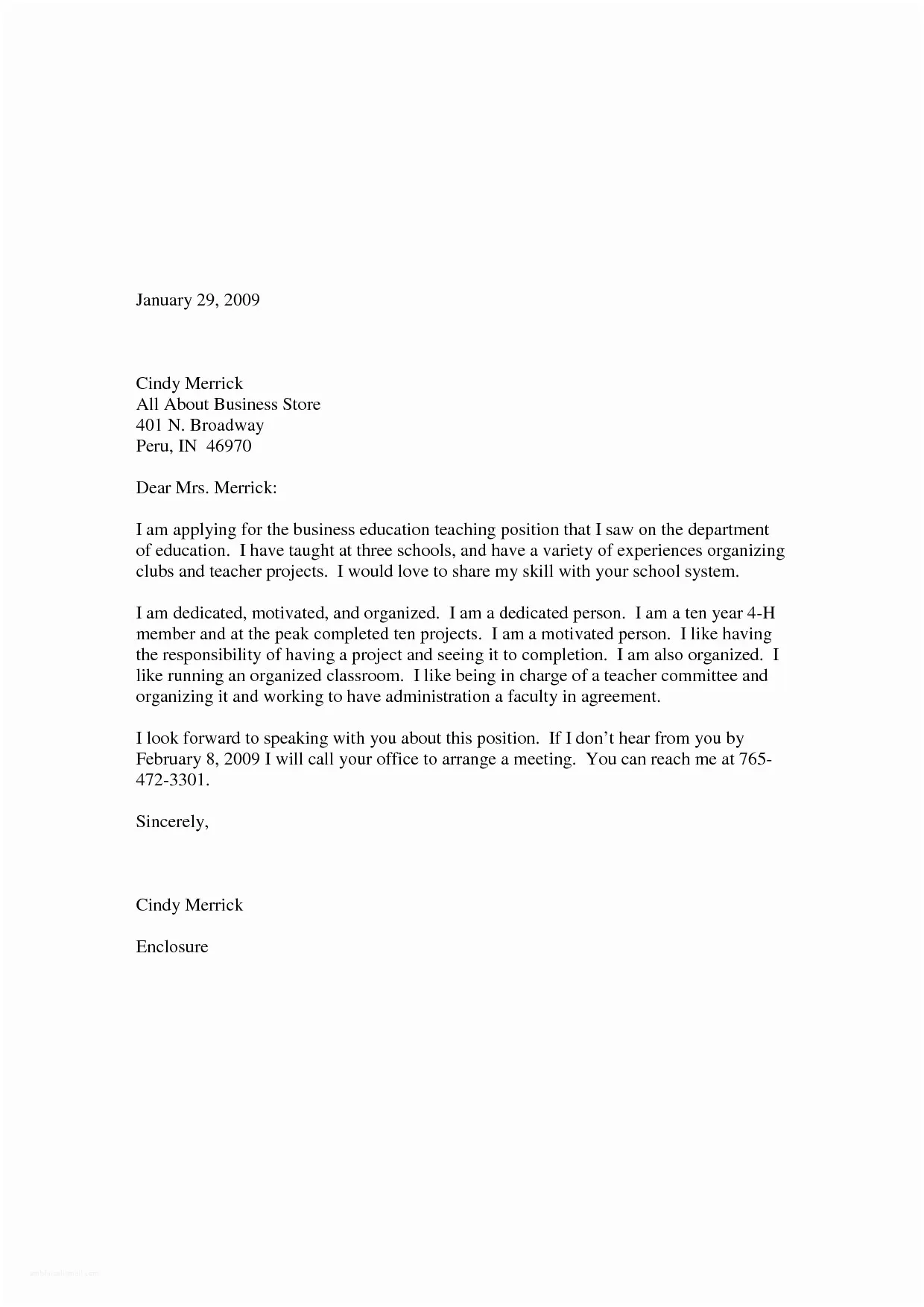What is an LVN Cover Letter?
An LVN (Licensed Vocational Nurse) cover letter is a crucial document that accompanies your resume when applying for nursing positions. It serves as your introduction to the hiring manager, providing a glimpse into your qualifications, skills, and enthusiasm for the role. Unlike a resume, which is a factual summary of your experience, the cover letter allows you to express your personality, explain your career goals, and demonstrate why you are the perfect fit for the specific job. A well-crafted cover letter can significantly increase your chances of getting an interview by making a strong first impression and highlighting your key strengths. The purpose of a cover letter is to sell yourself and convince the employer that you are the right candidate. Therefore, every detail must be perfect to impress the employer.
Why is an LVN Cover Letter Important?
In the competitive field of nursing, a cover letter is an invaluable tool that can distinguish you from other applicants. It gives you the opportunity to personalize your application and show the employer why you’re the best candidate for the job. It allows you to expand on the information in your resume, giving more context and depth to your experiences and accomplishments. The cover letter allows you to demonstrate your communication skills, your understanding of the job requirements, and your passion for nursing. Many employers consider the cover letter as important as the resume. A cover letter proves that you have the ability to communicate effectively. With a cover letter, you can prove you are the perfect person for the job. For these reasons, a cover letter is a crucial element for securing a nursing position.
Key Components of a Successful LVN Cover Letter
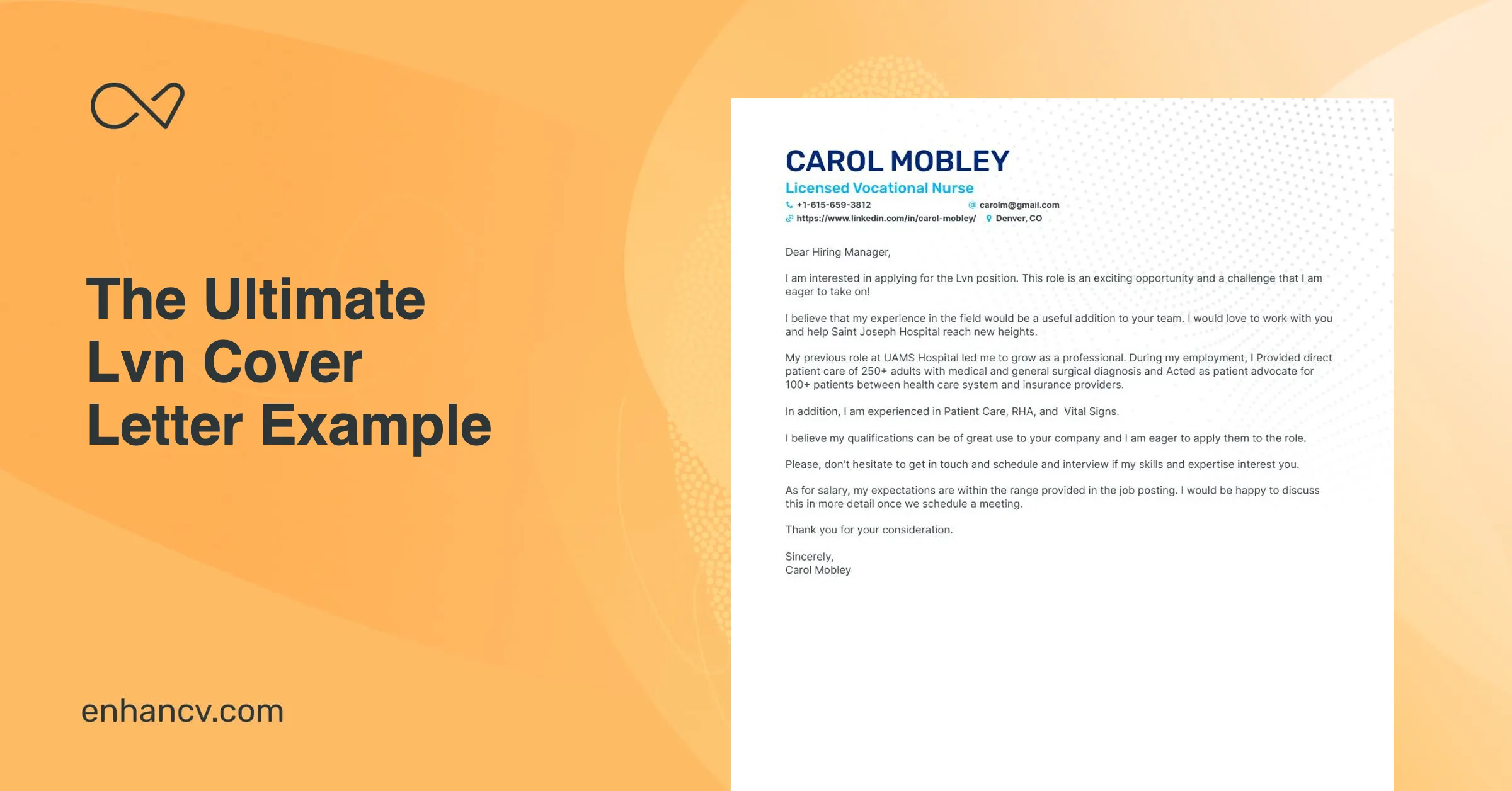
A successful LVN cover letter is well-structured, professional, and tailored to the specific job and employer. It should include the following key components, each carefully crafted to convey your qualifications and enthusiasm. A well-written cover letter will set you apart from other applicants, making a strong first impression that can lead to an interview. Each component must be carefully considered and thoughtfully written to showcase your unique skills, experience, and passion for nursing.
Your Contact Information
Start your cover letter by clearly stating your full name, address, phone number, and professional email address. This information should be placed at the top of the letter, usually left-aligned. Ensure your email address is professional and includes your name. Double-check that the phone number is correct and that your voicemail message is professional. Your contact information should be readily available for the employer to easily reach you. Accuracy and professionalism are essential in this section, as it sets the tone for the entire letter and allows the employer to contact you promptly if they are interested in your application.
Date
The date is an important component that establishes when the cover letter was written. It is placed below your contact information, usually on the left-hand side or right-hand side of the letter. The date should reflect when you are submitting your application. Ensure that the date is formatted consistently with other professional documents. It is important to include the current date to demonstrate that you are actively seeking employment and that your application is current.
Recipient’s Information
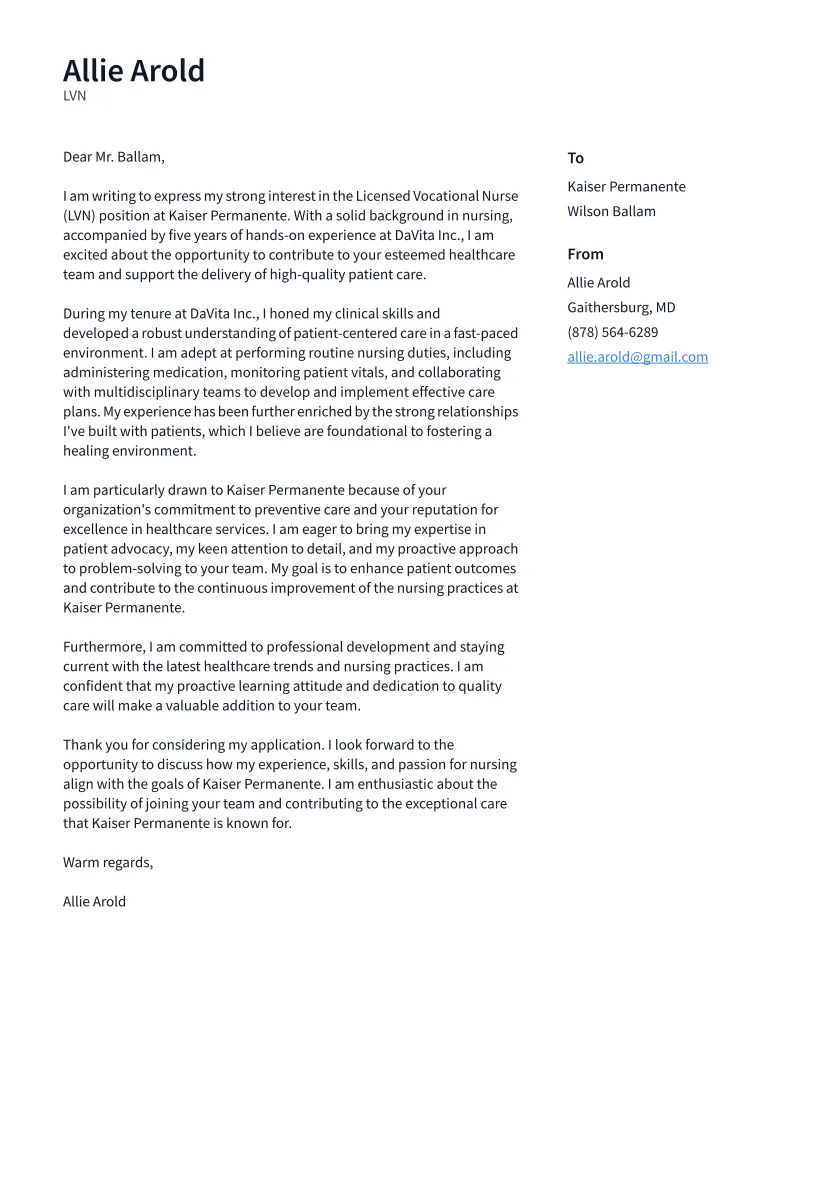
Direct your cover letter to the hiring manager or the specific person in charge of recruitment. If you know the name of the hiring manager, use it in your salutation. This shows that you’ve taken the initiative to research the company. If you cannot find the hiring manager’s name, address the letter to the ‘Hiring Manager’ or the relevant department. Include the person’s title and the name of the healthcare facility or company you are applying to. Providing the recipient’s information demonstrates your attention to detail and that you are genuinely interested in the specific position. Proper address conveys respect and professionalism, which is critical for a nursing role.
The Salutation
The salutation is the greeting of your cover letter. If you know the hiring manager’s name, use ‘Dear Mr./Ms./Dr. [Last Name]’. If you do not know the hiring manager’s name, use a professional alternative like ‘Dear Hiring Manager’ or ‘Dear [Department Name] Hiring Team’. Avoid generic greetings like ‘To Whom It May Concern’ or ‘Dear Sir/Madam’. The salutation sets the tone of your letter and should be respectful and professional. A well-chosen salutation shows that you are attentive and prepared, which makes a favorable first impression. Proper salutation helps build a sense of connection and respect.
Writing a Compelling LVN Cover Letter Body
The body of your cover letter is where you make your case for why you are the ideal candidate for the position. It should be concise, engaging, and highlight your most relevant skills and experiences. The body of your cover letter is where you will show your strengths, how you fulfill the job’s requirements, and demonstrate your interest in working for the facility. The goal is to make a positive impression and convince the employer to call you in for an interview. Consider the job description and the needs of the hiring organization to make sure you properly represent yourself in the best way possible. The body of your letter should showcase your skills, experience, and passion for nursing.
Expressing Your Passion for Nursing
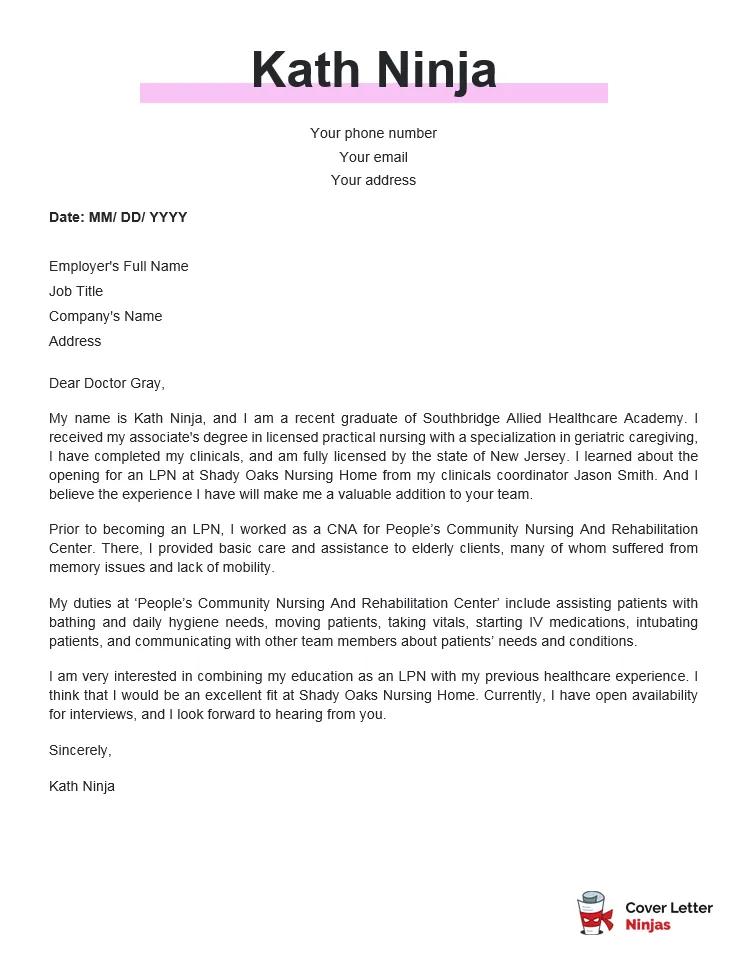
Express your enthusiasm for the nursing profession and why you are drawn to this particular role. Share what motivates you and what inspires you to be a nurse. This can be related to your patient care experience, your dedication to helping others, or your passion for providing quality healthcare. Describe your nursing philosophy. Your cover letter should reflect your dedication to patient care and your professional goals. Explain why you are interested in the specific role and organization you are applying to. A genuine expression of your passion will make your cover letter more memorable and show that you’re truly invested in the role. Demonstrating enthusiasm is a key component of crafting a compelling cover letter.
Highlighting Relevant Experience and Skills
Focus on the most relevant experiences and skills. Choose 2-3 key experiences that align with the job description. Use the STAR method (Situation, Task, Action, Result) to describe each experience. Include specific examples of how you’ve used your skills to achieve positive outcomes. This can be in the form of quantifiable results. Show the employer how your skills align with the job requirements. Make your application relevant to the specific job by including keywords from the job listing. Highlight the skills you possess that are important for the position. Provide details to back up your claims and show the employer that you possess the needed qualifications. This will prove why you would be a good fit for the position.
Quantifying Your Achievements
Whenever possible, quantify your accomplishments using numbers and data. For instance, you could state that you assisted with the care of X number of patients per shift or reduced patient falls by Y percent. Quantifying your achievements makes your cover letter more impactful and demonstrates your ability to contribute positively to the healthcare facility. Providing specific metrics will showcase your ability to improve patient outcomes. Quantifiable achievements make it easier for employers to evaluate your accomplishments. Quantifying your achievements can also set you apart from other applicants. Make it simple for the employer to see what you can accomplish.
Tailoring Your Cover Letter to the Job Description

Customize each cover letter to match the specific requirements and expectations of the job you are applying for. Before writing your cover letter, carefully review the job description, paying attention to the required skills, qualifications, and responsibilities. Tailoring your cover letter demonstrates to the employer that you have carefully reviewed the posting and are a good match for the role. Personalization increases the likelihood of your application getting noticed and improves your chances of receiving an interview. Customizing your application shows that you are dedicated to the position.
Using Keywords from the Job Posting
Incorporate relevant keywords and phrases from the job description into your cover letter. This practice helps your application get noticed by applicant tracking systems (ATS), which are used by many employers to scan resumes and cover letters. Make sure that the keywords you select are relevant to your skills, experience, and the job requirements. Use keywords naturally within your sentences and paragraphs. Do not keyword-stuff, as this can make your cover letter appear forced and unnatural. Including keywords will help you demonstrate that your skills and experience align with what the employer is looking for. Using relevant keywords can also help demonstrate your understanding of the job requirements.
Demonstrating Knowledge of the Employer
Research the healthcare facility or organization you are applying to and demonstrate your knowledge in your cover letter. Mention their mission, values, or recent achievements. Show your familiarity with their services, patient population, or the specific department you are applying to. Demonstrating knowledge of the employer will show that you are genuinely interested in the position. Tailor your cover letter with the employer’s specific needs. Research the employer’s website. Mentioning specific details shows your dedication and helps your application stand out from others. Researching and showing your knowledge of the company will make your cover letter much more effective.
The Closing of Your LVN Cover Letter
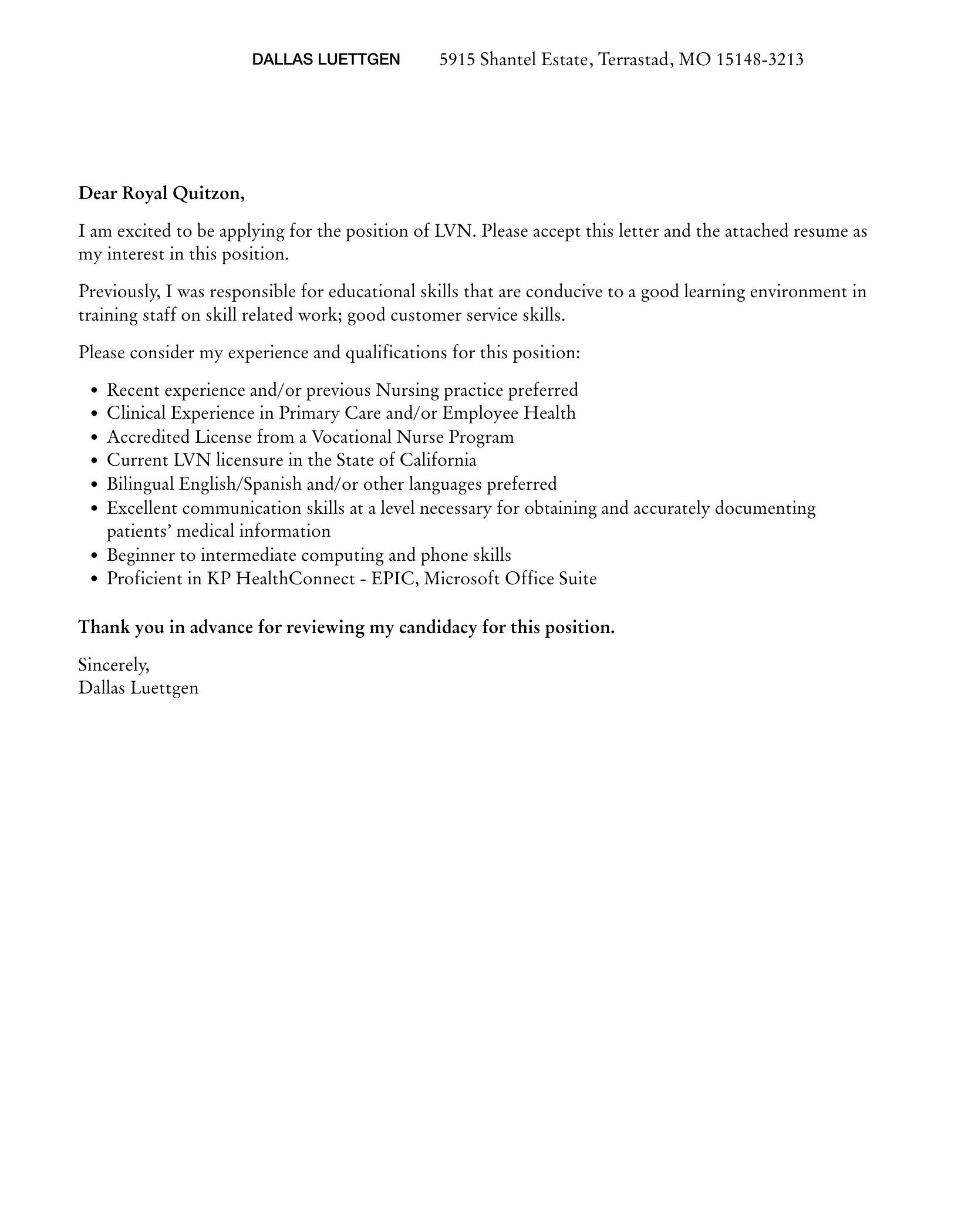
The closing of your cover letter is your last chance to make a positive impression and encourage the employer to contact you. Your closing should be polite, professional, and convey your interest in the position. This section summarizes your interest in the role and calls the reader to action. The closing is just as important as the introduction. Proper closing ensures your professionalism and helps you stand out. The final words of your cover letter can make the difference.
Expressing Gratitude
Thank the hiring manager for their time and consideration. Express your appreciation for the opportunity to be considered for the position. A simple statement of gratitude demonstrates respect and professionalism. A polite closing will leave a positive impression. A genuine thank you shows that you value the employer’s time and that you are genuinely interested in the position. Showing gratitude is also a simple gesture that often goes a long way. Your gratitude in the closing reinforces your commitment to the position.
Call to Action
Conclude your cover letter with a clear call to action. Invite the hiring manager to contact you for an interview. Provide your contact information one more time, and restate your interest in discussing your qualifications further. Make it easy for the employer to move forward with your application. Your call to action should provide a clear message to show your desire to be contacted for an interview. A strong call to action encourages the employer to take the next step. You want to be ready for the next steps.
Proofreading and Editing Your Cover Letter
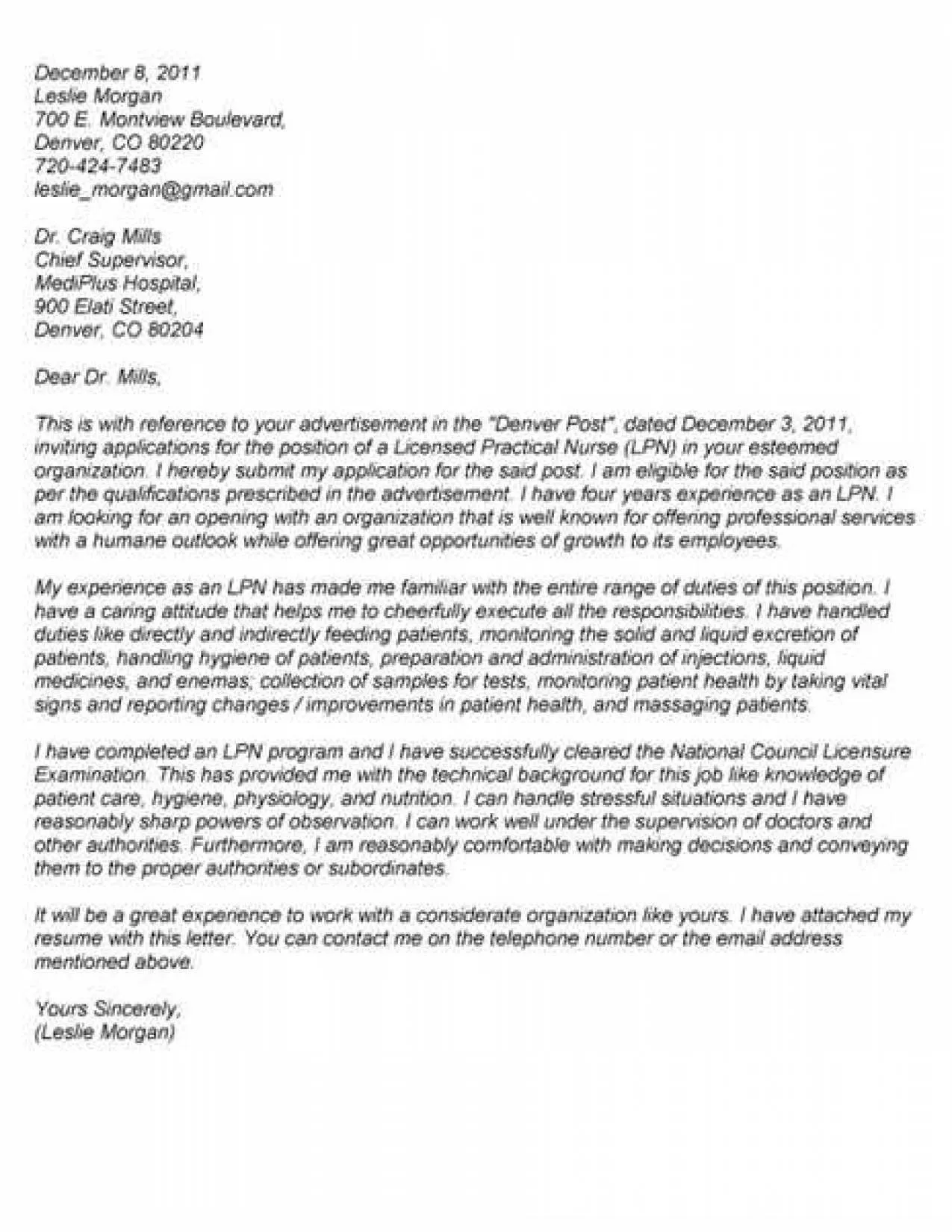
Proofreading and editing your cover letter is essential to ensure it is free from errors and presents you in the best possible light. Carefully review your cover letter for any grammatical errors, spelling mistakes, or typos. Check the letter for clarity, conciseness, and a professional tone. Ensure that the formatting is consistent and easy to read. Have someone else review your cover letter for a fresh perspective. Make certain that the language, tone, and style are appropriate for a professional setting. Polishing your cover letter helps make a positive impression. Proofreading also makes a strong statement about the candidate’s attention to detail.
Common Mistakes to Avoid in Your LVN Cover Letter
There are some mistakes you will want to avoid. Be mindful of writing generic cover letters that are not tailored to the specific job description. Avoid using jargon or slang. Do not include too much personal information. Make certain not to exceed one page. Make sure to address the letter to the correct person. Finally, always proofread your letter.
Formatting Your LVN Cover Letter for Success
Formatting is important to make sure the cover letter is easy to read and professional. The format of your cover letter will have a strong impact on the first impression that it creates. Proper formatting shows attention to detail. Following formatting guidelines will help your application stand out.
Font and Size
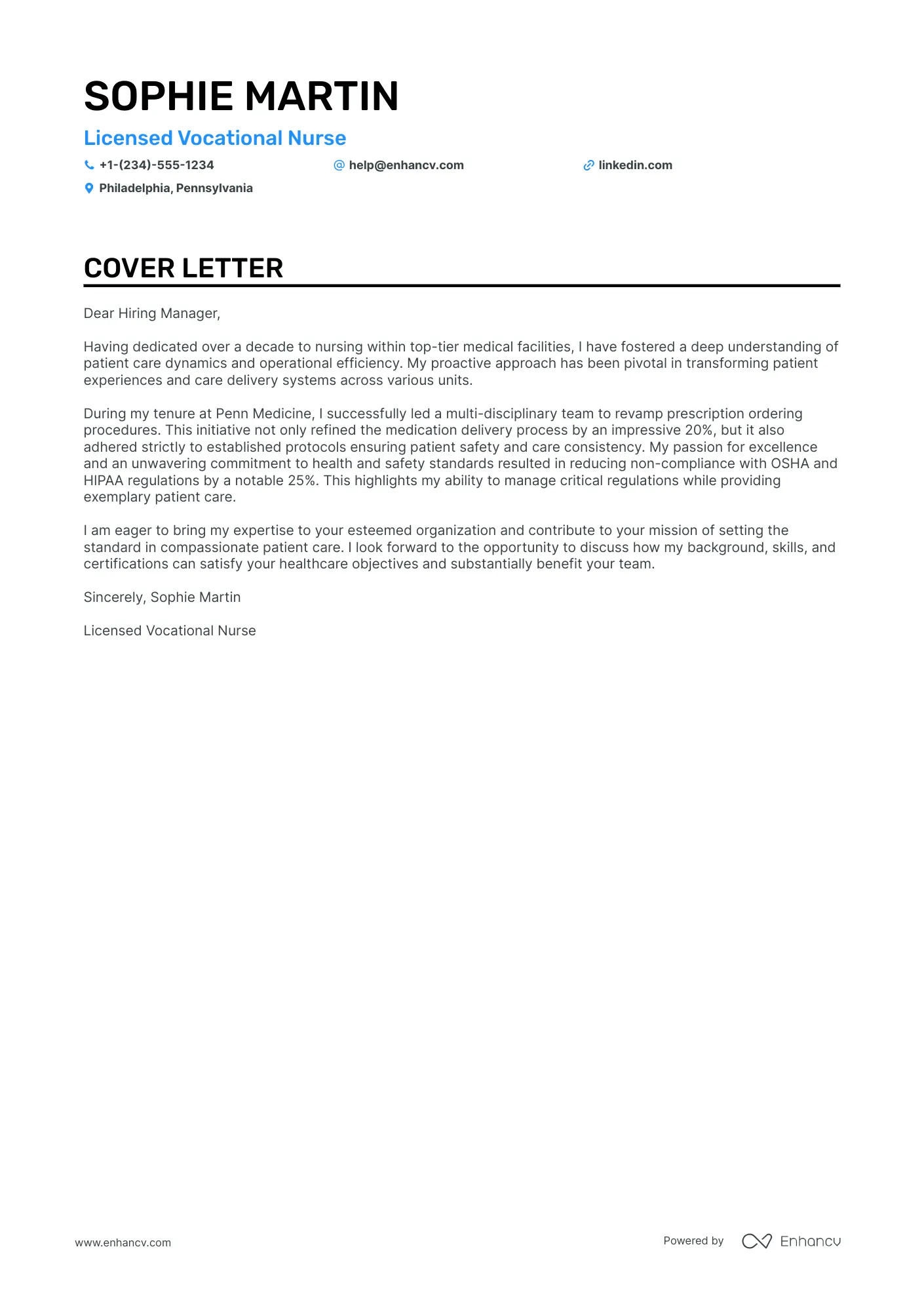
Select a professional and easy-to-read font, such as Times New Roman, Arial, or Calibri. Use a font size between 10 and 12 points. The font should be readable. Maintaining consistency with font and size will make your cover letter more visually appealing. Proper font choice will help your application stand out.
Margins and Spacing
Set consistent margins of 1 inch on all sides of the page. Use single spacing for the body of your letter, with a double space between paragraphs. This creates a clean and organized layout. Your margins and spacing should be consistent. Make sure to space the letters for a professional look.
LVN Cover Letter Examples
Reviewing examples of successful LVN cover letters can provide valuable insights into how to structure and format your own. Seek out examples that align with the specific type of nursing position you are applying for. Pay attention to the language used, the tone, and the way the applicant highlights their skills and experience. Use these examples as a guide to write your own unique cover letter. Reading examples will help you understand how to apply all these rules and guidelines to your cover letter. Examples can also help you create a better letter.
Tips for Sending Your LVN Cover Letter
When submitting your cover letter, always follow the instructions provided in the job posting. Ensure that your cover letter is saved in a professional format, such as PDF, to maintain its formatting. If you are submitting your cover letter via email, include a clear and concise subject line, such as ‘LVN Application - [Your Name]’. Attach your cover letter and resume as separate documents. Make sure the documents are professional and easy to access.
Follow-up Procedures
After submitting your application, it is appropriate to follow up with the hiring manager after a reasonable amount of time, typically one to two weeks. Send a brief, professional email or make a phone call to reiterate your interest in the position. In your follow-up, reiterate your interest in the role, and inquire about the status of your application. Express your appreciation for their time. If you have not heard back after the follow-up, you may choose to send a second follow-up a few weeks later. Keep follow-up interactions professional and respectful. Follow-up procedures help demonstrate your interest and will make you stand out.
Final Thoughts on Crafting a Standout LVN Cover Letter
Crafting a standout LVN cover letter requires careful attention to detail, personalization, and a clear demonstration of your qualifications and passion for nursing. By following these guidelines, you can create a compelling cover letter that will make a positive impression on hiring managers and increase your chances of landing an interview. Always tailor your cover letter to each job description. Make sure to customize your cover letter to align with the job you want. A well-crafted cover letter is a valuable investment in your career.
